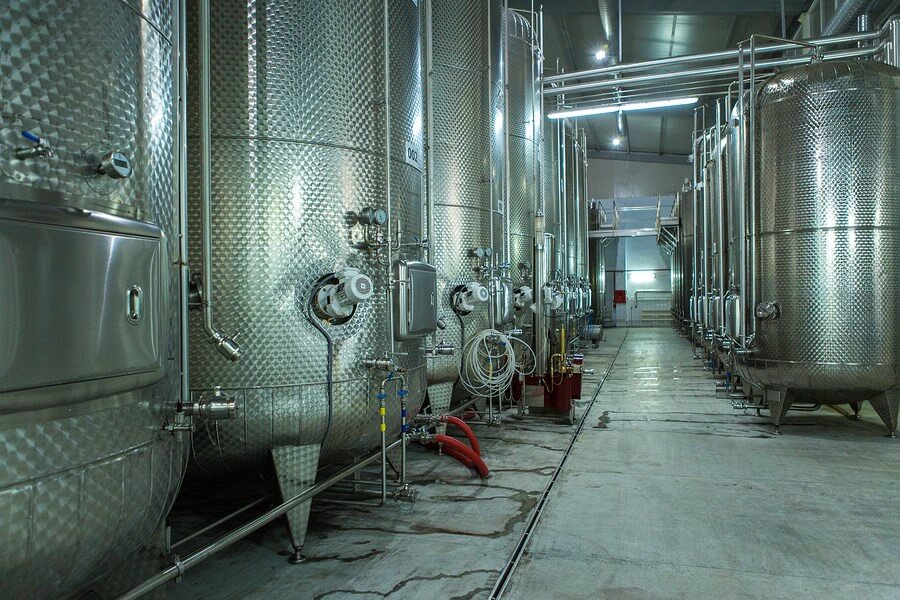According to experts, the first wines were drunk over 8,000 years ago. However, history dictates ancient wines differed greatly from those of today.

Share this article
At the earliest stages, our ancestors have used ingredients like ash and even lead to make wine. Wine making technology has come a long way.
Wine Making Technology:
Winemakers across the globe are integrating modern technology to enhance traditional wine making. Modern wine making technology paves the way for the most wonderful wines of the future. Here’s how modern winemakers use high-end technology to make better wine.
Sorting Grapes:
Grape picking machines were used to make cheaper wines for years. Hand picked, the best grapes have remained untouched by machines . However, thanks to the to the advancements of the technology, modern-day grape picking and sorting machines have become incredibly sophisticated; these machines are equipped with sensors, cameras, gyroscopic technology and vibrating conveyor belts to pick the best grapes and sort them out as if they were picked by an expert human.
Reverse Osmosis:
Maintaining a good balance between just the right kind of flavor and the precise volume of alcohol is a key factor when it comes to wine making. Highly ripen grapes give very rich flavors and on the other hand, they increase the alcohol volume (make the wine more potent). Many years ago, it was a challenging task to maintain the right balance and that made better wines more expensive. However, there are high-end filters that can mechanically reverse this osmosis using a special separation process (to separate ethanol molecules and water). This way, they can maintain the right color, flavor and alcohol volume to the precise values.
Growing Grapes:
Modern technology allows winegrowers to utilize a sophisticated strategy like Biodynamic Faming to yield better quality grapes with an increased productivity. In fact, biodynamic farming is not a single step; it is a process that combines several rational steps. This system determines the facts such as the micro climates, the type of the land, quality of the soil and potential threats and provides solutions to overcome each one of those issues. Thanks to a concept like biodynamic viticulture, winegrowers are now capable of producing better grapes while conserving the natural soil. Many Californian wineries utilize the newest wine producing technologies, and for good reason!
Investing:
The advancements of information technology have affected almost every industry. Modern winemakers can make the best use of this technology and think of an approach like crowdfunding. Such approach can help new entrepreneurs to thrive; crowdfunding is a very effective way to raise funds from a large number of people (in small amounts of money). Once the manufacturer succeeds, investors can enjoy wines at incredibly discounted prices. Fundraising programs work solely through the internet.
Modern technology allows winegrowers to utilize a sophisticated strategy like Biodynamic Faming to yield better quality grapes with increased productivity.
Geographic Information System (GIS):
As of today, GIS (Geographic Information Systems) can provide incredibly useful information related to the cultivation of grapes. A winemaker can use this technology to create a fully detailed, 3D map to identify the differences of the land that is used to grow grapes. Such map will practically tell winemakers where and how to grow their grapes. This approach eliminates the necessity of reviewing soils, analyzing historical climatic data and depending on many other guesswork. If you are a vineyard owner, you have the opportunity of knowing the precise location to grow the right kind of grapevines. Eventually, such system helps the vineyard owners to save considerable amount of time and money while experiencing best quality wine.
Boxed Wine (Rewrite):
Although a traditional wine lover will not admire it very much, an innovation like canned wine can become handy in many occasions. One of the biggest enemies of finished wine is oxygen. When a bottle is opened to consume a single glass of wine, there is risk of exposing the entire bottle of wine to oxygen. However, when it comes to a canned wine, things are pretty different; a can contains wine just enough for a single serving. In addition to that, this can be a good option to consider if you intend to taste a glass of wine on-the-go.
Eco-Friendly Wine:
In general, winegrowers are concerned about environment than most of the other entrepreneurs. With the assistance of the modern technology, however, modern vineyard owners can enhance their environmental friendly approach. Hundreds of thousands of waste are produced by wineries across the globe and as of today, the technology is sophisticated enough to create alternative fuel using this grape waste. It is needless to mention that biofuel created using the grape waste is highly beneficial in many fronts.
Diet Wine:
In general, health experts consider wine a healthier alternative to other alcoholic drinks, red wine specifically. However, even wine consist of notable amounts of calories and therefore, it can trouble diet conscious people. If you are a worried about high-calorie food, you can now purchase diet-wine which has significantly lesser amount calorie. However, we don’t believe that diet-wine might taste exactly like traditional wines.
In conclusion, apart from the aspects previously mentioned, many additional advancements are reforming the wine making industry. Wine making technology tangibly affects the taste and the smoothness of wine. In fact, a smooth, sparkling glass of wine is something beyond just a drink; for most of us, a good bottle of wine is a special experience and a feeling. For instance, tasting a canned wine can be significantly different experience than a traditional bottle. However, approaches like usage of GIS systems, converting grape waste into fuel, using biodynamic systems etc. are highly appreciable aspects in terms of modern wine making.